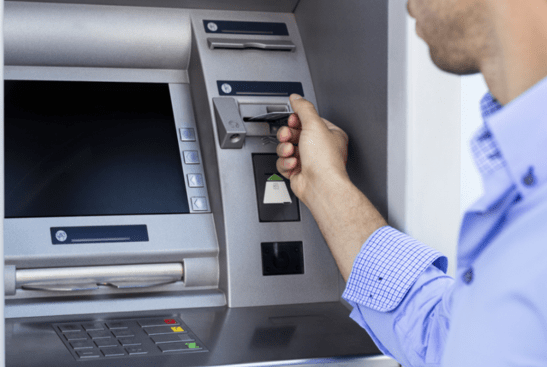Intro: Debit Cards for Teens Under 18 | What You Should Know About Cards for Your Teenager
There are many selections available when choosing a debit card for teens. Indeed, the financial industry has abundant offerings in financial products for teens and their parents.
However, there are also several specific considerations prior to obtaining teen debit cards.



Image Source: Debit Cards for Teens Under 18
For example, there are distinct differences between obtaining a debit card for teens and establishing a bank account with an ATM card. An additional differentiation exists between teen debit cards and giving teens access to credit cards. Each choice brings definitive positives and negatives to the forefront.
As such, the purpose of the information below is to provide ample resources for determining which financial product is the right one based on different yet equally important factors.
First, however, what are the benefits of considering debit cards for teens under 18? Why would a parent choose to give his or her teen access to funds in this way?
See Also: About RBS – What Is RBS? (Complaints, News & Reviews)
Why Consider Teen Debit Cards?
Carrying money around can be a risky venture for both adults and the young ones. In particular, as teens begin to have more independence, such as being employed, driving or traveling on their own, they’ll need access to larger cash amounts. It could be as simple as dropping them off at summer camp and their needing money for emergencies.
Furthermore, it’s never too early to provide teens with a solid understanding of how to manage finances. Firsthand experience is far more relevant for learning the ins and outs of maintaining financial health.
With a whopping 80% of consumers using debit cards to pay for everyday purchases, it’s easy to see why teens might fall under the false impression of limitless cash availability. Why? Immediate purchases help reinforce instant gratification.
Those numbers on the screen representing an account balance aren’t like cold, hard cash. They’re not tangible. Such a combined perspective sets teens up for a risky mentality towards money.
There is always more, right?
Securing a debit card for teens helps to set healthy limits on spending whereas credit cards may further ingrain the “there’s always more” psychology (since, depending upon the credit limit, there is a higher spending ceiling).
At the very least, debit cards for teens under 18 merge the positive aspects of having cash accessibility with learning how to spend wisely. This is further reinforced as long as parents are modeling the same behaviors.
It is natural to witness an adjustment period whereby teens may make some “newbie” mistakes (predicated upon teen maturity level). Yet, choosing the right debit card for teens (or other financial goods) will help to minimize the steepness of their learning curve.
Don’t Miss: Bank of America vs. Wells Fargo – Home Loan Reviews, Mortgages & Complaints
All-in-One Change Management Tools
Top Rated Toolkit for Change Managers.
Get Your Change Management Tool Today...
Automatic Teller Machine (ATM) Cards vs. Debit Cards for Teens
Debit cards and automatic teller machine (ATM) cards are considered by many financial institutions to be different types of financial products.
While both are issued by banks and both have personal identification numbers (PINs) attached to them, an automatic teller machine card without a Visa® or MasterCard® logo is only used to withdraw money directly from a linked checking (or savings) account.



Image Source: Debit cards and automatic teller machine (ATM) cards
Consequently, automatic teller machine cards tend to be “PIN-only” and are solely used at purchase point terminals which allow ATM access. The upside to setting up this type of card for teens is it limits access as long as the parent links the card to an account without overdraft protection. Such accounts will then deny purchases which pushes the linked account over currently available funds.
A potential negative of this non-debit card for teens is the fact that when out-of-network automatic teller machines are accessed, the non-systemic banks will charge service fees. Also, depending on the type of account linked to the automatic teller machine card, many banks will charge overdraft fees on top of monthly service fees if there is a zero balance in the account when the service fee is charged.
Although parents should continually monitor any type of financial product for their teens, “PIN-only” automatic teller machine cards require constant oversight.
Account-Linked Debit Card for Teens: Positives and Negatives
In contrast, debit cards for teens do possess the aforementioned logos and have the same purchase point access as credit cards. Debit cards can either be linked to a checking (or savings) account or they may be prepaid cards. They may also be used as “PIN-only” or as a credit card at participating purchase point terminals.
A debit card for teens that is linked to a bank account has several positives.
First, banks will establish a pseudo-separate checking or savings account for teens. What this means is, depending upon the financial institution’s guidelines and account type availability, parents will have access to the teen’s bank account. However, parents maintain a separate, inaccessible account.
To emphasize, the details of each account type is bank dependent. Yet, many banks do not charge extra fees for providing a teen checking account linked to teen debit cards as they consider this the first step in a long-term financial relationship.
Certainly, it’s a good idea to shop around at various institutions for the best scenario regarding details of teen-to-parent account access and fee assessments. An additional positive for parents that find teenage bank accounts with debit card services is that several financial institutions offer parental support in teaching financial literacy through mini “hands-on banking” courses.



Similar to automatic teller machine cards, if parents disallow overdraft protection or set withdrawal limits, then most accounts will halt further spending from that account until the balance is replenished. Also, choosing a debit card for teens, as opposed to, say, a credit card, protects the parent’s credit score.
However, as with all choices, there are some potential downsides to consider.
For parents who enact overdraft protection on debit cards for teens under 18, it is highly likely that overdraft fees will apply. Since debit cards for teens linked to checking or savings accounts are upgraded automatic teller machine cards, if a teen uses the card at an out-of-network automatic teller machine, fees will apply.
Finally, given the reality of identity and credit card theft, online purchases by teens using a debit card place both parents and teens at high risk.
Related: Barclays Online Savings Account Review – What You Should Know About Barclays Online Banking
A Prepaid Debit Card for Teens: Pros and Cons
Another option when searching for the best teen debit card are prepaid debit cards. Prepaid debit cards for teens operate exactly like debit cards linked to a checking or savings account. The primary difference between the two is that prepaid debit cards for teens tip in favor of acting more like a credit card.
Some are actual credit cards where there a lump sum is first sent in, and then, after a period of time, a line of credit is extended. A majority of prepaid debit cards do not offer a credit line. They merely offer a card in exchange for the aforementioned lump sum. Once that limit is reached, nothing more can be purchased with the card until more money is included.
Nor are prepaid debit cards for teens linked to a checking or savings account. However, many of the institutions that offer prepaid teen debit cards do provide an automatic deposit of paychecks.
This way, if the teen is employed, he or she has access to the funds via the debit card but cannot overdraw beyond the deposit (this cannot be overemphasized, as they look exactly alike and can be used similarly to credit cards, which easily conveys a false association).
There are a few disadvantages to understand. First, a prepaid debit card for teens incurs monthly fees for merely having a card. Some are steeper than others. An additional point to consider are the possible reloading fees.
While there are many options for prepaid debit cards, there are very limited choices on how to find free debit cards for teenagers within the prepaid structure.
Fees aside, prepaid debit cards for teens under 18 continue to be quite the promising choice for getting teens started on the road to financial self-management.









What Is the Best Teen Debit Card? How to Find the Best Debit Card for Teenagers
Determining the best teen debit card is a highly personal choice. As explained above, the largest consideration for selecting a debit card for teens is the associated fee structure. The big three, American Express®, Visa®, and MasterCard®, each offer their own prepaid debit cards.
American Express® is the only one out of the three that provides “subaccounts” specifically for teens and ranks as one of the top prepaid debit cards for teens. There is a monthly and reloading fee associated with this card.
Another option is the Kaiku Visa Prepaid Card. Kaiku is consistently mentioned in the top prepaid debit card reviews. With zero monthly fees, no minimum balance, and possible purchase rewards, Kaiku is a strong competitor in the debit card for teens market.
Much like its counterparts, MasterCard® also maintains general prepaid debit cards. However, MasterCard® offers Prepaid Travel Cards specifically designed for use during travel. The Prepaid Travel Cards are used in lieu of traveler’s checks and might be a valid preference for teens on the go.
Almost every major bank (Union Bank, Wells Fargo, Chase, etc.) offers teenage bank accounts with a debit card attached. Some may refer to them as “student accounts.” Therefore, searching individual bank reviews regarding their checking and savings accounts and contacting preferred banks is recommended.
While there are a wealth of selections for teen debit cards, setting a solid foundation for financial literacy is an important aspect of becoming an adult. Certainly, the added fees connected to all debit cards for teens is a concern.
However, those fees are a small price to pay in contrast to the potential financial disaster looming if teens aren’t taught fiscal responsibility.
This is not to say there aren’t teens that have a naturally mature monetary outlook. However, parents modeling the behavior and then having their teens mirror robust money management skills will go further in ensuring sound fiscal responsibility.
Popular Article: BMO Harris Bank Reviews – Everything You Need to Know (Credit Card Rewards, Private Banking & Review)
AdvisoryHQ (AHQ) Disclaimer:
Reasonable efforts have been made by AdvisoryHQ to present accurate information, however all info is presented without warranty. Review AdvisoryHQ’s Terms for details. Also review each firm’s site for the most updated data, rates and info.
Note: Firms and products, including the one(s) reviewed above, may be AdvisoryHQ's affiliates. Click to view AdvisoryHQ's advertiser disclosures.



